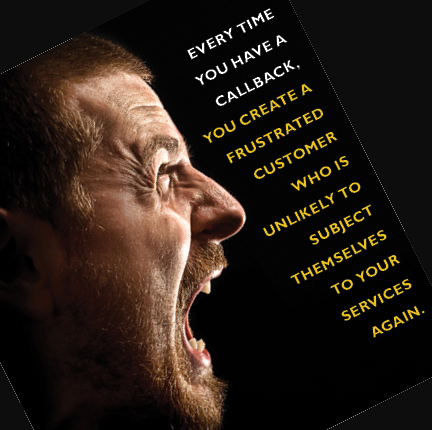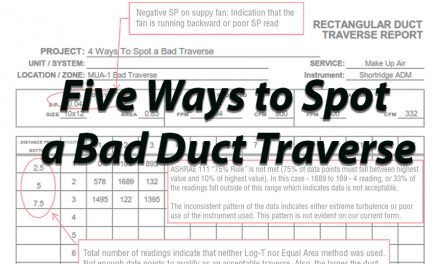
Dennis Mondul, HVAC Contractor Solutions
While doing work for around 1,000 HVAC contractors over the last 20+ years, there has been a remarkable consistency in service labor as a percentage of service revenue. It is common for a company to operate with a labor rate of 27% to 35% of revenue for the department. Meaningful profitability is difficult for a company in this situation.
The standard labor rate for a good service department has traditionally been 22%. And the happiest, best-paid technicians and owners work in a department that may have it at 19% to 20%. Important note: In these companies, it is not selling spiffs that make them the best paid. It is using a compensation method that rewards people for being effective (details are available on request).
Often the first thing that needs to be fixed in a service department is the frequency of callbacks. To demonstrate the financial impact, let’s use an example of a failed fan motor.
If you account for the technician’s drive time to the customer’s home, the time to diagnose and repair the unit, a trip to a supply house to get a motor that may not be in the van inventory, paperwork preparation, as well as time communicating to the customer, typical man-hours for the job may involve as much as four hours. At $25.00 per hour, labor (based on this job’s
revenue of $450) comes to a little over 22%.
For each time there is a callback, we need to account for a second technician’s travel, diagnostic, repair, paperwork, and communication time with the customer. This may add up to two more hours of raw labor invested in the rescue technician.
The financial impact of this call back would look like this:
- $100.00 for the first tech
- $50.00 for the second tech
- $150 is now 33% for the labor on $450 of service revenue.
There’s More . . .
 By expending two hours for the rescue technician to complete the fix, you forever lose the additional revenue that a capable tech could have generated on another job. Let’s say that two hours could generate at least $300.00.
By expending two hours for the rescue technician to complete the fix, you forever lose the additional revenue that a capable tech could have generated on another job. Let’s say that two hours could generate at least $300.00.
Now we are looking at hard dollar costs that add up to $150.00 of raw labor, plus the lost revenue of at least $300.00. There is no quicker way to lose money in a service department than to overlook callbacks.
There Is Even More . . .
Every time this happens, you have a customer who may feel cheated and betrayed. Customers who are subjected to this kind of treatment are unlikely to subject themselves to what they see as incompetence again. This is the definition of a lost customer.
Dissatisfied former customers are also likely to vocalize their frustration to a group of people we will call, ‘never-will-be-customers.’ If this happens too often, your marketing campaigns may not be able to overcome their negative influence on potential new customers.
The damage to your local branding is difficult to quantify but could be incredibly expensive.
But Wait! There Is Way More . . .
When your technicians fail to perform in a customer’s home there is an additional price paid by others on staff. For instance:
The Customer Service Representative – There are customers who express frustration and sometimes anger to innocent co-workers who answer the phone. For someone needing to sound happy and WOW customers on every inbound call, this can be a serious burden.
The Manager – Angry customers tend to somehow reach the boss. Now the boss may need to respond and give time, attention, and sometimes money back to the customer because of the failure. There is too little of all of those items to spend on unnecessary and avoidable call back issues.
How Do You Turn it Around?
First, don’t blame the technicians for the problem, even subtly. This only makes becoming profitable more difficult.
 Holding termination over the heads of those who underperform rarely generates better results. Besides that, it may be easier to find a leprechaun than it is to find an available and capable service technician. Here are some ideas that can help.
Holding termination over the heads of those who underperform rarely generates better results. Besides that, it may be easier to find a leprechaun than it is to find an available and capable service technician. Here are some ideas that can help.
- List the technical failures from the service tickets – After a quick assessment of the failed service ticket, you will likely have a very good picture of your technicians’ technical training needs. And they are likely to be categorized as electrical, mechanical, and issues in the refrigerant circuit. Those companies that have a weekly training schedule with ‘hands-on’ time with copper, motors, wires, torches, etc. tend to develop very good and loyal technicians.
However, the fact is that much of the training done in contractors’ labs or in schools, fail to require competence in correcting improper airflow. As a result, this training can often generate inaccurate diagnoses or the diagnostic readings may be useless.
- Early in the training cycle, you want to build mastery in Performance-Based Contracting? – It could be said that most meaningful diagnostics for furnace and air conditioner operation begin with precise airflow. Absent that, you won’t be able to determine the proper refrigerant charge, proper Delta T, capacity, amp draw, dehumidification, or even determine if ductwork leaks are impacting system performance.
Continue on next page













Recent Comments